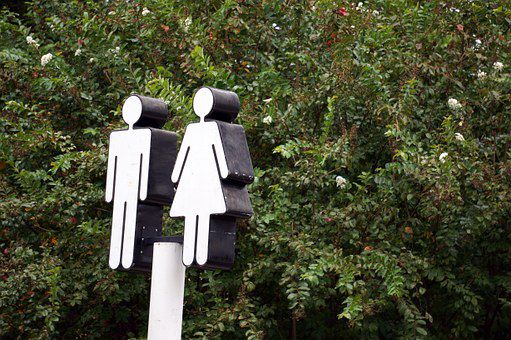Toilet Paper & Sanitary Products
Wait before you wipe and think about the chemicals! 
Loo Rolls are not created equal –luxury quilted, scented, printed, bumper length, bumper soft, budget, eco sustainable and recycled! What’s the fuss? The answer is Formaldehyde and a bevy of toxic chemicals, guaranteed to make a greedy bum wiper think twice!
With a lifetime of use, sit pretty and carefully consider your choice of sanitary supplies too; after all, it’s a delicate area where potential toxins are readily absorbed straight into our bloodstreams…
Composition of a sanitary pad and a merry breakdown of the top chemicals in no particular order:
- The topsheet is a polyethylene/polypropylene fabric with a petroleum-based emollient finish.
- A two-layer core of open-celled, polyacrylate polymer foam and a backsheet of impermeable polyethylene film with adhesive to secure.
- Scented versions contain a small amount of perfume applied between the backsheet and the under surface of the core.(1)
Formaldehyde
The issue with all tissue products; formaldehyde is needed to bind the pulp fibres together and keep them strong when wet and is also a key toxic ingredient for all fragrance & perfumes. Formaldehyde is a skin irritant and human carcinogen. (2)
Chlorine Bleach
For a whiter than white ‘sanitary-looking’ product, bleaching is necessary and mostly involves chlorine, which can produce dioxins and other by-products (DBPs) such as trihalomethane. Dioxins are extremely toxic, with risks including reproductive and developmental problems, damaging the immune system, hormonal and endocrine disruptors and can be a carcinogen.(3)
Acrylates
For absorbency to see you through, think polyacrylate polymer foam – widely used in a variety of consumer products for its ability to absorb several hundred times its mass in water. It's the gel-like crystals in baby diapers and the polyacrylate polymer core in sanitary pads, which makes them absorbent. The synthetic sodium polymer is highly toxic when inhaled or ingested, causing damage to your eyes, skin and lungs but as a dry solid it is considered non-toxic. Questions have been raised about possible health effects on babies who wear disposable diapers containing sodium polyacrylate, as babies' skin is more sensitive than adults. However, the compound was removed from tampons in 1985 because some women who left their tampons in place too long experienced unacceptable levels of irritation caused by sodium polyacrylate in the product.(4)
Petrochemicals, Benzenes, Toluene and Xylene
Bottom line, synthetics and plastics restrict air flow, trap heat and create dampness, potentially promoting yeast and bacteria growth. Additional odour neutralizers, fragrances and adhesives are a petrochemical bath of resins, polymers, polyethylene (PET), polypropylene and propylene glycol (PEG) contaminants linked to hormone disruption, cancer, birth defects, dryness and infertility. (5)
BPA
Helping to save the planet and choose recycled is to be commended but plasticizing chemicals like BPA and BPS that you may think of in baby’s bottles, canned foods and shop till receipts have been largely detected in paper products, especially recycled. BPA affect hormones that disrupt embryonic development and has been linked to cancer, tumors and other adverse developmental effects.(6)
Pesticides
- Conventional tampons contain pesticides: More chemical pesticides are used for cotton than for any other crop.(7)
- Conventional tampons probably contain genetically-modified organisms (GMOs). According to the USDA, 94 percent of all U.S. cotton is genetically engineered.
Phthalates
Sanitary pads are made of synthetic plastics. Phthalates are used to soften plastics and have been linked to a variety of health concerns including endocrine disruption, impacts to the heart and reproductive systems, diabetes, some cancers, and birth defects. (4) They also give paper tampon applicators a smooth finish.
When considering your toxic exposure, think once-a-month over nearly 4 decades, the delicate and direct skin-to-skin contact but also that the other toxins (not in direct contact), that leach out and are more easily absorbed when wet, giving even greater exposure – not a great idea when you think it through… over a lifetime, that’s chronic exposure!
Safer Alternatives

References:
- Safety assessment of sanitary pads with a polymeric foam absorbent core www.sciencedirect.com
- National Cancer Institute www.cancer.gov/formaldehyde-fact-sheet
- www.mamavation.com/brands/toilet-paper.html
- www.encyclopedia.com/science/academic-and-educational-journals/sodium-polyacrylate
- Environmental Health News www.ehn.org/diapers-and-menstrual-pads-chemicals-2627099478.html
- National Center for Biotechnology Information www.ncbi.nlm.nih.gov/pubmed/21939283
- The World Counts - Cotton pesticides Statistics www.theworldcounts.com cotton
More reading and resources:
www.ehn.org/diapers-and-menstrual-pads-chemicals-2627099478.html
www.iresolve.eu/index.php/component/k2/item/92-infinicel-what-is-made-of
www.huffpost.com feminine-hygiene-products
www.huffpost.com toxic toiletries
www.best-formaldehyde-free-toilet-paper-for-2019
